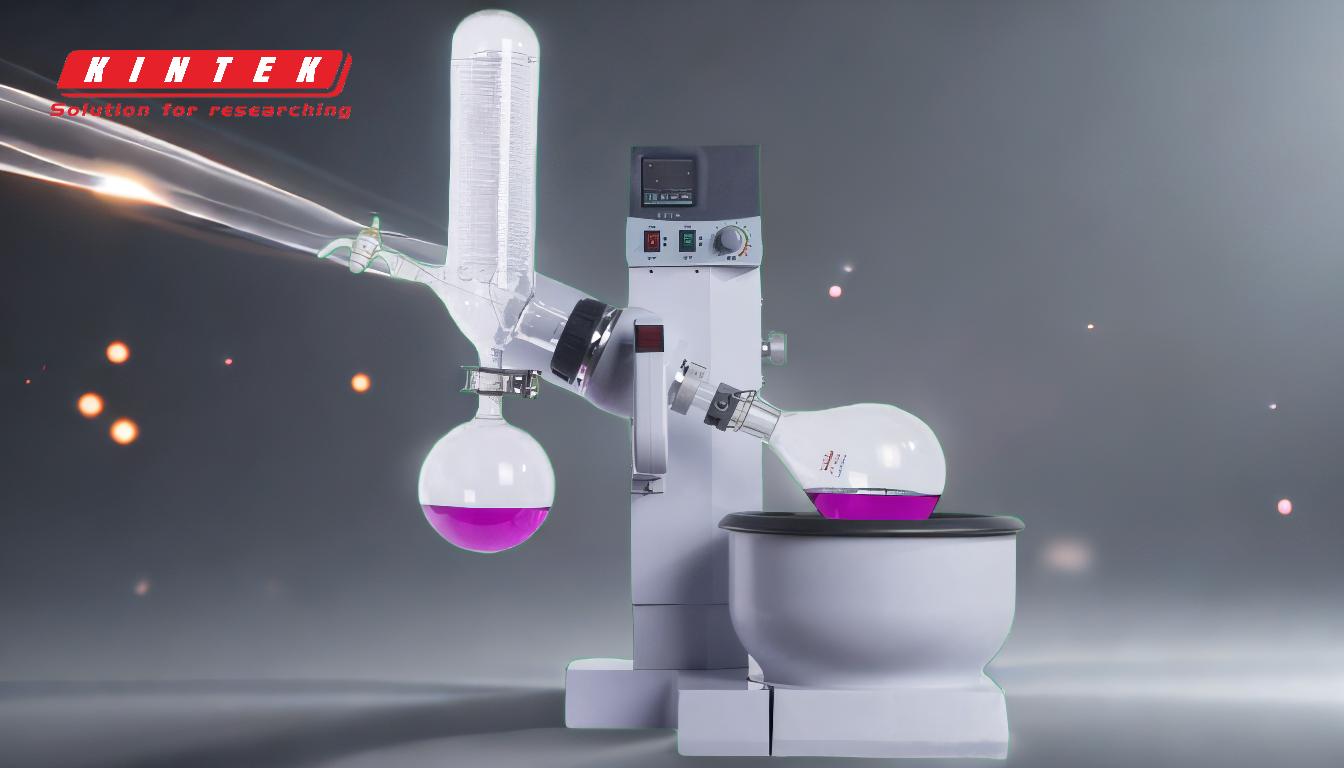The pressure in a rotary evaporator (rotovap) is a critical parameter that directly influences the efficiency and success of the distillation process. By operating under reduced pressure (vacuum), the boiling point of the solvent is lowered, allowing for gentle and efficient evaporation at lower temperatures. This prevents thermal degradation of sensitive compounds. The optimal pressure depends on the solvent being evaporated, with most common lab solvents requiring a low-vacuum pump or even a sink aspirator. Key considerations include balancing the pressure with the heating bath and chiller temperatures to avoid bumping and ensure smooth operation. Tools like manometers and distillation nomographs can help fine-tune the pressure settings for specific solvents.
Key Points Explained:

-
Role of Pressure in Rotary Evaporation:
- Pressure reduction (vacuum) lowers the boiling point of solvents, enabling evaporation at lower temperatures.
- This is particularly important for heat-sensitive compounds, as it minimizes the risk of thermal degradation.
- Lower pressures also facilitate the extraction of delicate aromas and flavors without "cooking" the sample.
-
Typical Pressure Range for Common Solvents:
- Most common lab solvents (e.g., ethanol, water) require a low-vacuum environment.
- A low-vacuum pump or a sink aspirator is often sufficient to achieve the necessary pressure reduction.
- The exact pressure depends on the solvent's properties and the desired evaporation rate.
-
Balancing Pressure with Temperature:
- The heating bath temperature typically ranges between 25°C and 50°C, depending on the solvent.
- Lower pressures allow for efficient evaporation even at lower bath temperatures, reducing the risk of bumping (sudden, violent boiling).
- For example, ethanol distillation is optimized when the vacuum is set to achieve a vapor temperature of 15-20°C, with a bath temperature of 30-40°C.
-
Tools for Pressure Optimization:
- A manometer can be used to measure and monitor the pressure inside the rotovap.
- Distillation nomographs provide a graphical method to determine the optimal pressure and temperature settings for specific solvents.
- Automated solvent library features in modern rotovaps can simplify pressure selection by recommending settings based on the solvent type.
-
Impact of Pressure on Process Efficiency:
- Lower pressures speed up the evaporation process by reducing the boiling point of the solvent.
- However, excessively low pressures can increase the risk of bumping if not balanced with appropriate bath and chiller temperatures.
- Proper pressure management ensures consistent results and minimizes the risk of sample loss or contamination.
-
Practical Considerations for Equipment Selection:
- When purchasing a rotary evaporator, consider models with adjustable vacuum controls and automated pressure settings.
- Ensure the vacuum pump or aspirator is compatible with the required pressure range for your solvents.
- Features like solvent libraries and digital pressure displays can enhance usability and reproducibility.
By understanding and optimizing the pressure settings in a rotary evaporator, users can achieve efficient and reliable solvent removal while preserving the integrity of their samples. Fine-tuning the pressure in conjunction with temperature controls ensures smooth operation and high-quality results.
Summary Table:
| Aspect | Details |
|---|---|
| Role of Pressure | Lowers boiling points, prevents thermal degradation, preserves delicate compounds. |
| Typical Pressure Range | Low-vacuum environment (e.g., ethanol, water) using a low-vacuum pump or aspirator. |
| Balancing Pressure & Temp | Heating bath: 25°C–50°C; lower pressures reduce bumping risk. |
| Tools for Optimization | Manometers, distillation nomographs, automated solvent libraries. |
| Impact on Efficiency | Speeds up evaporation; excessive pressure can cause bumping. |
| Equipment Selection Tips | Adjustable vacuum controls, solvent libraries, digital pressure displays. |
Optimize your rotary evaporation process—contact our experts today for tailored advice!












